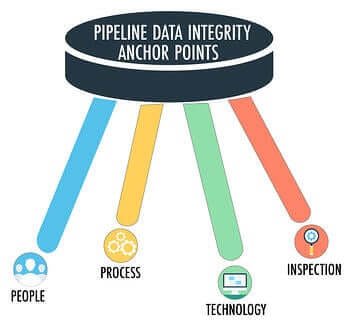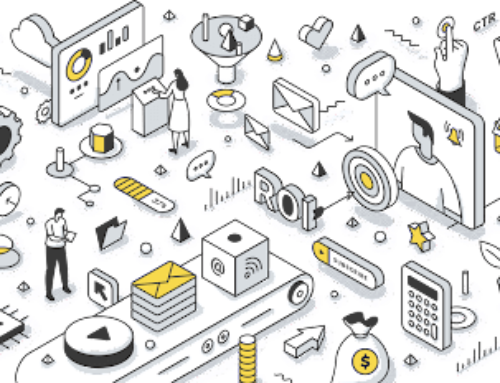In recent blogs I’ve been writing a lot about the evolving market because it’s especially important in these conditions to have robust processes that lend confidence and set you up for success. When designed and operated properly, your Sales Pipeline is another key tool to serve in this purpose; a proxy to identify what’s going well and what’s not going well with your business. Your organization’s ability to scale is largely dependent on your ability to reliably forecast revenue, which really boils down to the quality and volume of data within your Pipeline. Setting up, leveraging, and monitoring this resource properly enables you to see performance against key metrics and accurately show where your business is headed.
However, there are stumbling blocks that many Owners and Sales Leaders face when they look to formalize their Sales Pipeline methodology. The primary misunderstanding I see is the belief that a Customer Relationship Management (CRM) system on its own will provide the on-target visibility desired. This, coupled with too many bells and whistles, makes it easy to lose sight of the primary role of a CRM, to support a well-thought-out Sales Strategy in the simplest method possible. Getting caught up in the technology can lead to a misstep where companies invest in a system without completing the fundamental steps of defining the underlying strategy and associated processes first.
When designed correctly, process discipline will be reflected in Pipeline performance, but only if the right technology is being utilized and if the salespeople are engaging with the system properly. So, take a moment and ask yourself if you’re operating a solid Pipeline that gives you confidence, or a "PipeDREAM" that frustrates you because of missed forecast projections.
|
THOUGHT PROVOKING TRIVIA
What percentage of Customer Relationship Management (CRM) system deployments fail?
a. 37% b. 55% c. 70% d. 82%
Scroll down to find the answer at the end of this blog.
|
let’s talk before you take action. I’m speaking from experience when I say a
quick conversation could save you a lot of time, money, and sales disruption.
Over the years, when it comes to the Sales Pipeline, the key question I commonly hear Owners ask about is, "what’s the accuracy of the data and how do we know if we can rely on it?"
The interplay between people, process, technology, and continual inspection is the secret recipe that creates Pipeline data integrity (valuable, actionable data).
Let’s take a closer look at these main components that feed Pipeline data integrity, "the 4-legged stool" that should support every business.

1. PEOPLE – Training to foster understanding, adoption, and accountability.
Even the best process, procedure and technology will fail without user adoption. The starting point is investing in well-rounded training to help the Salespeople understand how the infrastructure will help them achieve their individual goals; the technology or CRM being just one component. From there, creating advocacy within the team after having the right level of executive sponsorship from the start is the way to achieve essential adoption. This is especially important to motivate potentially stubborn Salespeople who tend to be resistant to change.
Once you are assured that your Salespeople understand how to engage with your Pipeline methodology and see value in it, then it is practical to expect compliance. This will open the door to your Pipeline becoming a powerful diagnostic tool that will allow you to pinpoint underperformance problems that need correction.
2. PROCESS – Solidifying repeatable and scalable process/procedure.
As leaders, we need to equip our sales teams with tools to guide their success. It is not reasonable to expect Sales Pipeline data integrity until we provide a proven Sales Process and guiding data procedures. When designed properly, these approaches will fuel confidence in new Salespeople and tenured veterans alike. This will naturally occur as they experience or see their colleagues experience that investing in the model generates predictable results.
“How’s Your Sales Process Confidence Measuring Up to the Results It’s Generating?”
Guiding data procedures will address data quality around things like sales activity, customer information collection, opportunities that feed into the Sales Pipeline, etc. All these moving pieces work together to provide the Salespeople and Sales Leaders a powerful view into real-time performance indicators that can be leveraged to optimize results. This level of visibility will also prevent the undesirable but common problem in CRM systems of "garbage in, garbage out."
3. TECHNOLOGY – It’s not about more, it’s about simplicity.
Your technology should make everyone’s lives simpler and more efficient. If you’re an Owner or Sales Leader, ask yourself, "do I have a simple and easy-to-understand dashboard at my fingertips that allows me visibility to see where my business is going?" The most important thing to note is that the best Customer Relationship Management (CRM) system is the one that gets used, helps your Salespeople succeed, and assists your leadership team in monitoring progress.
I come across companies that are still using Excel spreadsheets and notepads, and those that have fully integrated and advanced CRMs. In all cases, the first step is to define Sales Strategy and Metric Objectives so the technology can be aligned to the business requirements. Done properly, the technology isn’t the driver, it’s merely a vehicle to deliver on the business strategy. I often recommend scaling technology back to optimize adoption, a key contributor to data integrity. To get and keep users engaged, you will want to have the lightest possible technology structure that can deliver on key metrics.
CRM Adoption Calls for LESS Bells & Whistles
1. Choose a technology that allows your Salespeople to see their productivity improve with its use so that you can avoid resistance to adoption.
2. Align technology to your requirements to create a user-friendly experience, as well as insightful data (clarity on your key measurements/metrics).
3. Make sure that you have only the technology that you need and nothing more.

4. INSPECTION – Tweaking and tuning to optimize data integrity.
The fourth leg of the stool, Inspection, is the glue that makes Pipeline performance possible through the application of experienced Sales Leadership. It’s critical that the Owner or Sales Leader holding this seat monitors strategy execution and data integrity through routine Pipeline inspections. This, followed by targeted coaching with salespeople on an individual level, will fine tune sales skills and data entry compliance.
As more data is available in your CRM system, your organization will benefit from the ability to consider history and trends; identify what’s working and what’s not. This will allow more runway to repair performance breakdowns before Sales Goal achievement becomes hindered.
When Training, Process/Procedure, and Technology are all effectively designed and implemented, problem areas become easily identified through the Sales Pipeline. Diving in to inspect problem areas within a solid sales infrastructure will enable the Sales Leader to quickly diagnose root cause problems and apply the appropriate solution. Sales Performance will not be sustainable without ongoing Sales Leadership attention that embodies the full breadth of skills and activities needed to generate high-performance results.
approach, review my prior blog:
“Sales Leadership Impact on Your Business”
In closing, let’s recap – you want your Salespeople only working on prospects with the highest probability of closure. Your properly designed Sales Pipeline will serve as a diagnostic tool to identify sales performance problems if it’s built as the “4-legged stool” I outlined. Just remember, even the best process and system won’t be sustainable without ongoing, effective Sales Leadership.
|
THOUGHT PROVOKING TRIVIA ANSWER
70% of CRM projects fail. *
The management of customers and potential customers is critical. However, a key component of a productive Customer Relationship Management (CRM) system is having a set strategy that the technology delivers upon. I can help you avoid this misstep that results in a large CRM deployment failure rate. Schedule a time to chat. *Source: Linkedin.com
|







Leave A Comment